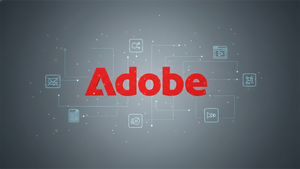Gen Z is leading the shift to AI-powered, visual-first work; neuroscience confirms the cognitive advantage.
- 90% of Gen Z say they do their best work visually
- 63% of Gen Z say encouraging AI experimentation would improve visual fluency
- 74% faster memory encoding when content is highly visual
- 84% of business leaders say poor visual communication causes delays or confusion
According to new research published today in Canva's annual "State of Visual Communication Report,” there is a significant disconnect between how Gen Z employees want to work and how most companies still operate.
This press release features multimedia. View the full release here: https://www.businesswire.com/news/home/20250909581776/en/

While 90% of Gen Z professionals say they do their best work visually, and neuroscience confirms the power of visual content, only 22% of organizations describe themselves as "design-led,” creating friction that slows productivity and undermines engagement.
With four generations working side by side, each with distinct communication preferences, companies are navigating rising inefficiencies as visual and traditional approaches clash. However, the research suggests leaders who bridge this gap and embrace Gen Z's visual-first working style can improve efficiency, elevate creative output and better attract and retain talent as the workforce evolves.
The Neuroscience Behind the Findings
A groundbreaking neuroscience component of the study, conducted using Steady State Topography (SST) to track real-time brain activity, provides scientific evidence of why well-designed visual content is more effective in the workplace. Compared to dull design, high quality visual content triggered:
- 74% faster memory encoding
- 26% greater emotional intensity in response to documents
- 21% greater emotional intensity in response to visual presentations
At the same time, the survey reveals gaps between visual and text-based communication:
- 76% report losing interest in text-heavy content
- 91% of professionals say visuals communicate ideas more effectively than text
“We’re seeing a clear mismatch between how the human brain is wired to absorb information and how most workplaces still communicate,” said Emma Robinson, Head of B2B Marketing at Canva. “The science shows that the traditional, text-heavy approach no longer meets the needs of today’s teams, especially in fast-paced, collaborative environments.”
The Generational Workforce Shift
Gen Z is helping redefine what effective communication looks like at work, and they’re asking for systems that match how they think and create:
- 87% believe visual communication skills are critical to future-proofing their careers
- 54% think a visual-first approach would improve visual fluency in their organization
- 63% say encouragement to experiment with AI would improve visual fluency
Yet 93% say barriers hinder their creativity at work, with most citing unhelpful tools. The disconnect is costly: both Gen Z (83%) and their managers (85%) admit to using unapproved tools to complete creative work. On average, teams now juggle between 8 and 9 platforms per week just to execute visual projects. The desire is clear, but the infrastructure hasn’t caught up.
The Business Impact
84% of business leaders say that poor visual communication causes delays or confusion across their organizations, but companies that have successfully aligned their communication infrastructure with how their workforce naturally operates see measurable benefits:
- 66% report clearer, more efficient communication of complex ideas
- 61% report stronger brand cohesion and differentiation
What Forward-Thinking Companies Are Doing
“As work becomes more visual, more distributed, and more AI-enabled, leaders have a real opportunity to reimagine how their teams connect and create," said Robinson. "Intuitive visual tools that align with how people naturally want to work can go a long way when it comes to empowering a global, diverse workforce."
Organizations investing in visual communication infrastructure and empowering teams to experiment with AI are unlocking measurable gains in creativity, speed, and alignment. Visual communication is no longer just for design teams; it’s now essential to how modern companies operate.
As AI raises the bar for speed and personalization, and visuals become the connective tissue of distributed, multigenerational teams, the companies that embrace this shift will be best positioned to lead the next era of work.
For recommendations on how to reduce inefficiencies, meet Gen Z expectations, and future-proof your team’s communication, read the full report here.
Methodology
The research was conducted in partnership with The Harris Poll and Neuro-Insight, combining:
- A global survey of 2,475 business leaders and Gen Z professionals across the United States, United Kingdom, Australia, Japan, India, France, Germany and Spain
- A neuroscience study using Steady State Topography (SST) to track real-time brain activity in 63 professionals as they viewed different types of business content
About Canva
Launched in 2013, Canva is the world’s leading all-in-one platform for visual communication and collaboration. Built to empower everyone to design, Canva serves the creative and design needs of enterprises, small businesses, consumers, and students in more than 190 countries worldwide. Whether you’re a novice taking your first steps in design, or a creative professional seeking powerful tools, Canva ensures users have what they need to transform an idea into something beautiful. Underpinned by the world's most comprehensive library of designer-made content, Canva is powered by a suite of products and proprietary AI tools that elevate how individuals and teams create, collaborate, and communicate with ease.
View source version on businesswire.com: https://www.businesswire.com/news/home/20250909581776/en/






